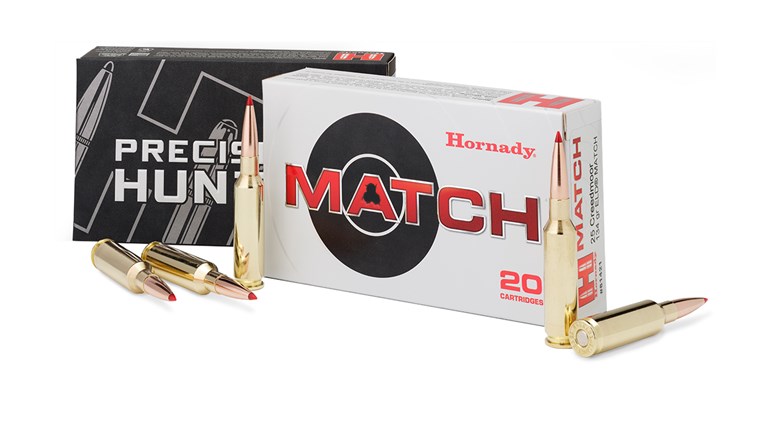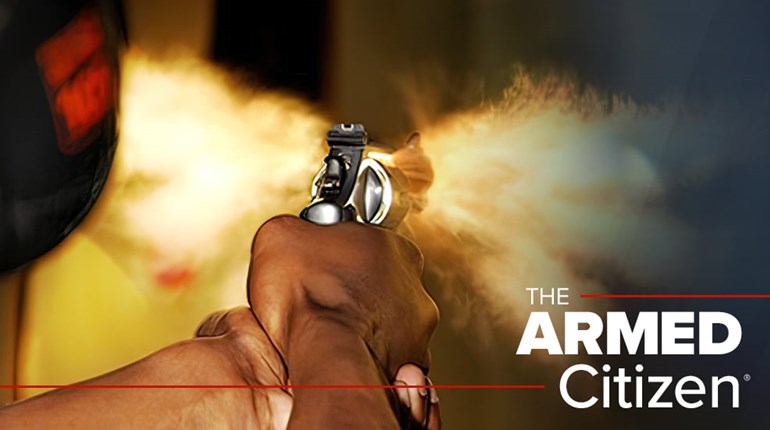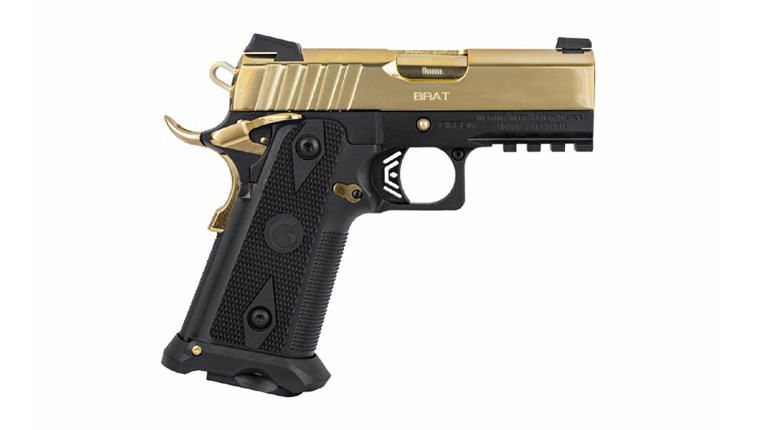
Prepped, primed and powdered, we’re almost to a complete round of hand-loaded ammunition, at least metaphorically speaking. Adding a projectile is the final step.
It’s easy to think this part of the assembly sequence ought to be a breeze. And so it turns out to be in procedural and mechanical terms: In most, ahem, cases, the projectile will sit cooperatively atop a sized, primed, flared and charged case, waiting to be pressed down to a depth that is action- and caliber-appropriate. It is also structurally sound enough to hold together to be shot out of one or another of your firearms.
But there is a not-inconsiderable “devil” in the details, as the old saying goes, and worse yet, the devil is camouflaged by what seems to be simple, reassuring data, and dressed up as “OAL.” Otherwise known as overall (cartridge) length, some serious cursing and rework can be avoided by understanding how this (seemingly) simple number relates to the practical geometry of making or keeping hand loads running in your firearms.
Non-Semi Autos
When it comes to bullet shape management—the real bogeyman in cartridge construction as opposed to OAL—there’s a slightly peculiar characteristic that connects the revolver and bolt/breech-loading centerfire worlds. Better still, the link is a simple one: Within an often-spectacular range of dimensions, OAL may be an “also ran” matter instead of the be-all, end-all you’d expect for bullet seating depth.

While you don’t see the extremes as frequently any more, they were once common. In .38 SPL, for instance, target loads built on “wadcutters”—an essentially flat-nosed bullet designed to mark the target with particularly sharp-edged clarity and seated flush to the case mouth (to control combustion volume/powder disposition)—are a stark contrast to bullets seated for the shortest possible jump to the forcing cone but that still allowed the cylinder to turn. Mere thousandths of an inch differences? Hah! You can measure these with a wooden ruler. As long as powder choice was or is appropriate, these extremes aren’t worrisome.
Bolt- or breech-feeding firearms (usually rifles) pare this down in terms of the scale. Here, that ruler won’t reveal the differences with ease; you’ll need a caliper. The effect at the target, however, may go back to the ruler: Small changes in seating depth affect many things through “freebore” (the length of the jump the bullet makes from case mouth to contact with rifling in the bore), and the effects it has on pressure, velocity and barrel life. Furthermore, the sensitivity to seating depth is variable—as much as a .030 may not effect some set-ups noticeably; in others, +/- .002 is the stuff of sub-MOA or utterly ho-hum.
But perhaps we belabor the point, OALs are important starting points: Whether your firearms match them by the time the groups grow small and the smiles large is another matter altogether. But as long as you follow correct reloading practices generally (consult the manual for your chosen system), and primer/powder/bullet matching specifically (consult your loading manual), OAL issues are mainly “nuisance” class.
At some point, you’ll almost always have to trade feeding reliability for accuracy, or vice versa. Winnowing such trade-offs down to nothing—or nearly so—by trading components in and out is where the “art” of reloading appears.
Semi-Autos
The just-won’t-function part of the seating/OAL equation really comes to the fore when we consider semi-automatic firearms. Whatever dimensions and tolerances allowed the bolt, breach or cylinder to close may not prove sufficient to get cartridges from magazine to chamber at semi-auto cycling rates. Unless you’re willing to put up with an incalculably annoying single-shot, “nominal” OALs may not get the job done at all.
This is complicated by the multiple factors that figure into a successful feeding formula. Here too, the appropriate OAL, as opposed to recommended OAL, is what concerns the hand loader most. Other factors may not be just firearm- or model-specific (like the recoil spring rate or slide mass), but may indeed be specific to your single exemplar of a particular firearm.

Building action-proving dummies based on the bullets you are working up is an all-but-certain solution to feeding problems with reloads. In making these, we go back to the recommended OAL, and build three to five dummies in progressive lengths, both longer and shorter, around the recommendation of the load book.
Don’t overthink this: If recommended OAL is 1.125 (for a 115-grain 9 mm, say), we build some at 1.115, 1.120, 1.125, 1.130 and 1.135. Get a Sharpie out to label the sets. Depending on bullet shape, all of these may feed just fine, and all should pass the “plunk” test, too: Falling to the shoulder of the chamber unaided, and falling back out of the barrel they’ll be shot in. (Remove the barrel from the gun for the easiest, safest version of this test.)
The next step is to hand cycle these through your pistol at the fastest rate you can smoothly manage. Pay special attention to the first two or three in a full mag, and the last one or two (these three or five dummies should be from one length “set”), as this is where most OAL-related feeding issues appear.
With a few repetitions, you’ll discover why this is so effective: The “feel” of stripping a round from the mag, of the bullet’s collision with the feed ramp and of seating in the chamber are distinctive and variable, often to surprising degrees. “Smoother” may be more apparent than you ever dreamed, and especially after you repeat the steps with each of the lengths. (It doesn’t matter what is in those middle positions in the magazine. We use exceptionally forgiving “ball” dummies that we have from past tests.)
This is also why we don’t just make the “standard” length and call it good should it chance to work—after all, the loading manual guys are pretty smart too. But in any individual gun, a few thousandths more or less can translate into outsized feeding enhancements and corresponding reliability.
When you get around to live fire testing, we suggest loading the shortest OAL with a tenth of a grain less powder than recommended, and the longest with a tenth more to compensate for the changing combustion “volume.” It’s not a perfect expedient, and in larger calibers, more may be required. As a rule of thumb, however, it seems to keep energy issues from creeping in to present as feeding issues.

As a general rule, semi-auto rifles are arduous along somewhat different axes. It’s desirable to optimize accuracy, but feeding reliability is of necessity a close second. Changing bullets and/or powders is sometimes the only solution. The process is similar, but the starting point different, and this from Nosler proxies our own technique with precision.
Whether you’re working in rifles or pistols, never assume that bullets with the same mass or comparatively like shapes will feed equally well. We promise you’ll develop an “eye” over time, but do it by the numbers in the early days, and you save time, money and aggravation.
A closing caveat bridges our charging and seating steps. As we alluded, overly deep seating will mostly compromise accuracy in modern, slope-shouldered rifle calibers due to the large “jump” from the case mouth to the rifling of the barrel, but we couldn’t find a single sure reference that implied such an ignition would actually damage a rifle. Mostly, these cartridges are so geometrically compromised that they won’t chamber, apparently. Certainly this has been our experience.
In straight-walled cases, however, too deeply seated bullets (from any cause) can destroy a firearm every bit as effectively as an overcharge (from Part 8). Modern guns generally have a lot of headroom in this sense, but we can’t recommend your own tests under any circumstances.
As with all things involving “pressure,” the drama draws nigh at geometric rather than arithmetic rates, and we’d say “avoid it.”
Part 1 Part 2 Part 3 Part 4 Part 5 Part 6 Part 7 Part 8
Frank Winn has been studying arms and their relationship to tyranny, meaningful liberty and personal security all his adult life. He has been a firearms safety/shooting instructor for more than 20 years, and earned state, regional and national titles in several competitive disciplines.


































